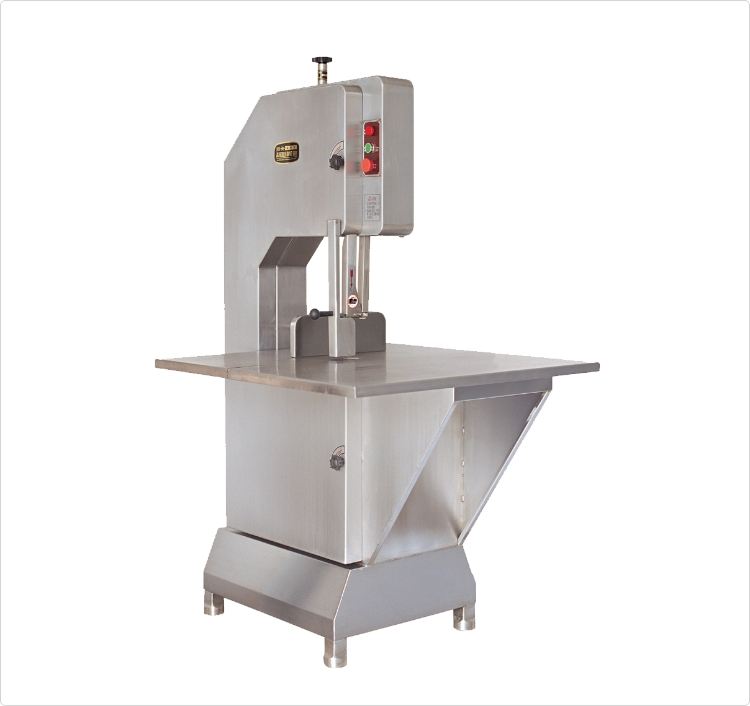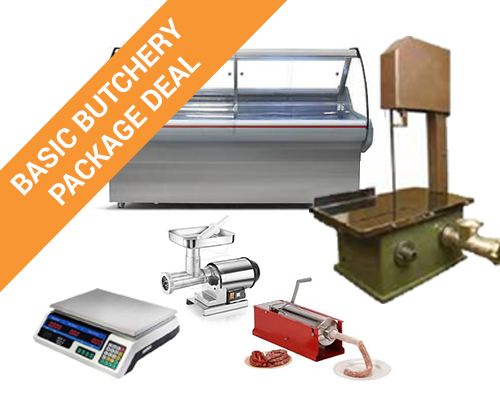Recommended Butchery Equipment for Safe and Streamlined Workflow
The Ultimate Guide to Maintaining Your Butchery Tools for Durability
Keeping butchery devices is crucial for making sure safety and security and performance in meat processing. Regular maintenance not only improves performance yet additionally reduces the risk of mishaps. From everyday cleansing regimens to expert servicing, every element plays an important role in equipment durability. Recognizing these techniques can considerably affect the operational success of a butchery. What actions should one focus on to attain excellent efficiency and safety?
Recognizing the Value of Devices Upkeep
Frequently forgotten, the upkeep of butchery devices is essential for assuring both security and performance in the meat processing market. Normal evaluations and maintenance of knives, saws, and grinders are essential to stop accidents and guarantee peak performance. Dull blades can result in better force being applied, increasing the risk of slips and injuries. Furthermore, well-maintained devices runs much more efficiently, decreasing waste and improving productivity.Neglecting maintenance can result in costly repair work or replacements, which influence a company's profits. By sticking to a scheduled upkeep plan, butchers can expand the life expectancy of their tools and equipment. This proactive method not only ensures conformity with health and wellness regulations but additionally cultivates a job setting concentrated on high quality and precision. Ultimately, understanding the importance of tools maintenance is vital for any type of butchery intending to thrive in an affordable market while focusing on the well-being of employees and consumers alike.
Daily Cleaning and Sanitization Practices
Keeping a clean and sterilized office is necessary for butchers, as it directly affects food security and quality. Daily cleaning practices need to start with the elimination of any kind of food particles and residues from all surfaces, including cutting boards, countertops, and tools. Butchers ought to make use of ideal cleansing agents that properly remove germs while being risk-free for food-contact surfaces.After cleaning, complete sanitization is essential. This includes applying a food-safe sanitizer to all surface areas, permitting appropriate contact time to ensure efficiency. Butchers should likewise take note of devices, utensils, and tools, making certain they are washed, washed, and sanitized after each use.In addition, correct handwashing practices need to be followed, as hand health is considerable in preventing cross-contamination. By applying these everyday cleansing and sanitization practices, butchers can maintain a risk-free and efficient work environment, eventually boosting the total quality of their items.
Honing and Sharpening Your Blades
Honing and developing knives is an essential ability for butchers, as sharp tools boost efficiency and precision in cutting. Normal upkeep of knives not only boosts performance but likewise assures safety and security during food prep work. Butchers need to understand the difference between honing and honing; honing gets rid of material to bring back the blade's side, while sharpening aligns the edge for top cutting.To hone knives, making use of a whetstone or specialist sharpening service is suggested. It is crucial to keep the proper angle during sharpening to attain a consistent edge. Sharpening can be performed with a refining steel, which should be used often to keep knives in prime condition.Butchers should likewise understand the material of their blades, as different types require specific care strategies. A well-kept knife will lead to much less exhaustion and better end results, making sharpening and developing an essential component of butchery tools care.
Examining and Keeping Saws and Mills
Regular evaluation and maintenance of saws and mills is necessary for guaranteeing peak efficiency and long life of butchery tools. Operators ought to routinely check saw blades for wear and damages, looking for nicks or dullness that might influence cutting performance. Cleansing the blades after each usage assists prevent build-up and deterioration, enhancing their lifespan.Grinders also require interest; drivers must evaluate grinding plates and knives for indications of wear or misalignment. Routinely lubing moving components guarantees smooth procedure and lowers possible failures. It is essential to tighten up all screws and bolts to protect against resonances that can cause mechanical failure.Additionally, examining electric links and cables for tearing or damages is crucial for safety. By sticking to a positive upkeep routine, butchers can minimize downtime and prolong the life of their saws and grinders, inevitably supporting an extra reliable and effective functioning atmosphere.
Correct Storage Methods for Butchery Equipment
Correct storage space methods for butchery devices are crucial for protecting their functionality and safety after upkeep jobs have been completed. Proper company minimizes the danger of damage and warranties that tools are conveniently offered when needed. It is a good idea to keep blades in safety sheaths or magnetic strips to avoid dulling and accidents. Reducing boards must be cleaned up and kept upright to allow air flow, stopping moisture buildup.Saws and grinders must be kept in assigned storage locations, preferably in a dry, temperature-controlled environment to prevent deterioration. Device shelfs can offer simple gain access to while maintaining tools off surfaces, reducing clutter. In addition, routine look at kept devices for indications of wear or damages will aid preserve their condition. By executing these storage techniques, butchers can extend the life of their equipment and assure a safe functioning atmosphere.
Setting Up Routine Professional Servicing
Arranging routine professional maintenance is essential for preserving the performance and durability of butchery equipment. Experts recommend that maintenance be carried out at least annually, though try this web-site more constant checks may be essential based upon use degrees. This aggressive approach helps prevent expensive failures and assurances conformity with health and wellness criteria.
Significance of Specialist Upkeep
While the long life and performance of butchery devices are essential for functional success, several businesses ignore the requirement of specialist upkeep. Regular expert servicing plays an important role in guaranteeing that equipment runs at peak great site performance. Technicians have specialized understanding and skills, allowing them to determine issues that might not show up during routine checks. This proactive strategy not only prevents unexpected malfunctions yet likewise expands the life-span of expensive equipment. Additionally, expert maintenance helps keep conformity with health and wellness policies, guarding both employees and clients. By buying expert maintenance, butchers can enhance efficiency, decrease fixing expenses, and foster a much safer working setting, eventually adding to the total success and track record of their business.
Recommended Servicing Frequency
Establishing a routine servicing schedule for butchery devices is necessary for maintaining peak efficiency and integrity. Typically, butchers need to aim for professional maintenance every 6 to twelve months, relying on tools use and workload. High-volume operations might require more regular checks, while smaller sized facilities can comply with the much longer interval.Regular maintenance helps identify possible concerns before they rise, making certain security and operational performance. It is advisable to get in touch with producer guidelines for specific recommendations relating to each tool. Additionally, maintaining in-depth documents of maintenance dates and done tasks can assist in monitoring tools wellness and intending future maintenance. By sticking to an advised servicing regularity, butchers can greatly enhance the longevity and efficiency of their tools.
Acknowledging Signs of Deterioration
Recognizing indicators of deterioration in butchery equipment is essential for preserving peak performance. By using visual inspection methods, drivers can determine potential concerns before they rise. Additionally, keeping in mind any kind of efficiency anomalies can educate necessary modifications to the regular maintenance timetable.
Visual Evaluation Techniques
Visual assessment offers as a crucial initial line of protection in determining deterioration on browse around this site butchery devices. Regularly analyzing tools and equipment permits operators to detect possible concerns prior to they escalate. Key areas to focus on consist of blades, joints, and surfaces for indicators of deterioration, dullness, or splits. Evaluating deals with and grips assurances they are protected and free from damage, which can compromise safety. In addition, analyzing electric elements for fraying cords or loosened links is crucial. An extensive visual assessment must be conducted consistently, preferably after each use, to maintain peak performance and extend the life of the devices. By being cautious, butchers can assure their devices continue to be in prime problem and protect their functional performance.
Efficiency Anomalies
Several refined performance abnormalities can show damage on butchery tools, which might compromise effectiveness and safety and security. For example, a visible decrease in reducing intensity can signify that blades are plain and require interest. Butchery Equipment. Devices may additionally show uncommon resonances or sounds, recommending misalignment or internal damage that might impact performance. In addition, inconsistent meat texture or uneven cuts might show that machinery is not operating at its ideal. Raised functional temperature levels can direct to overheating motors or rubbing in between components, running the risk of prospective failure. On a regular basis keeping track of these indicators is crucial, as they can result in even more significant concerns if left unaddressed. Timely acknowledgment of these abnormalities is essential for keeping capability and ensuring a risk-free working setting in butchery procedures
Normal Upkeep Schedule
Developing a regular upkeep schedule is necessary for determining signs of damage on butchery devices, as aggressive care can stop pricey fixings and assure peak efficiency. Normal evaluations must be performed to look for issues such as boring blades, loose fittings, or unusual noises. Scheduling upkeep tasks, such as sharpening knives or lubing moving components, assurances that tools continues to be in prime problem. Maintaining a maintenance log can assist track the frequency of service and the certain jobs carried out. Furthermore, being mindful to devices performance during everyday procedures can alert operators to prospective issues before they escalate. By focusing on a structured maintenance routine, butchers can extend the life expectancy of their tools and preserve efficiency in their operations.
Often Asked Inquiries
How Typically Should I Replace My Butchery Tools?
The frequency of changing butchery devices varies based upon usage and maintenance. Normally, blades might require replacement each year, while bigger machines can last numerous years, requiring normal examinations to identify when replacement is vital for peak efficiency.
Can I Utilize Family Cleaners on My Butchery Tools?

What Are the very best Products for Butcher Knives?
The most effective materials for butcher blades typically include high-carbon stainless-steel for resilience, edge retention, and corrosion resistance. Various other choices consist of ceramic for light-weight use and Damascus steel for aesthetic allure and toughness.
Is It Necessary to Oil My Meat Saw?

How Can I Avoid Rust on My Tools?
To stop corrosion on tools, normal cleaning is important. Using a thin layer of oil after usage produces a protective obstacle (Butchery Equipment). Furthermore, storing devices in a completely dry environment assists minimize wetness exposure and lowers rust formation